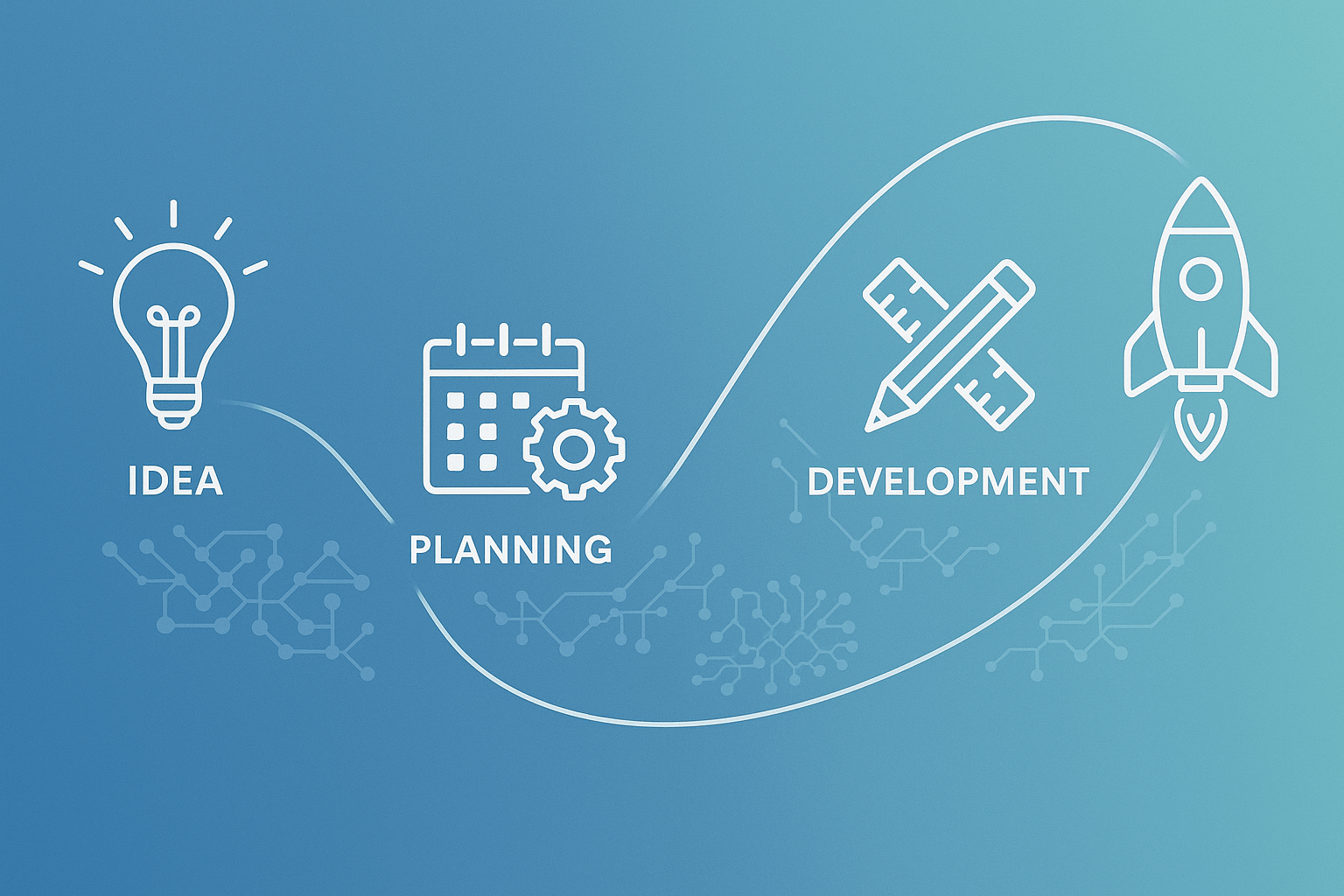The Modern Product Development Roadmap: From Concept to MVP

In today’s rapidly evolving tech landscape, the journey from concept to market-ready application has transformed dramatically. This comprehensive guide explores the modern product development roadmap, highlighting how emerging technologies and methodologies are reshaping each phase of the process.
1. Initial Concept and Strategic Planning
The foundation of successful product development begins with thorough strategic planning and market validation.
- Market Research Enhancement: AI-powered analytics tools now enable deeper market insights, competitor analysis, and user behavior prediction.
- Value Proposition Canvas: Define clear product-market fit using modern frameworks that integrate both user needs and technical feasibility.
- Stakeholder Alignment: Establish clear communication channels and expectations across development, design, and business teams.
2. Design Thinking in the AI Era
Modern product design leverages both human creativity and artificial intelligence to create exceptional user experiences.
- AI-Assisted User Research: Utilize machine learning algorithms to analyze user feedback and behavior patterns.
- Rapid Prototyping: Employ no-code tools and AI-powered design systems for faster iteration.
- Design System Integration: Build scalable design frameworks that maintain consistency across all product touchpoints.
3. Technical Stack Selection Framework
Choosing the right technology stack is crucial for long-term success. Consider these key factors:
📊 Decision Matrix for Tech Stack Selection:
- Business Requirements Alignment
- Scalability Potential
- Development Team Expertise
- Maintenance Costs
- Community Support and Documentation
- Security Considerations
4. Development and Implementation
Modern development practices emphasize flexibility, efficiency, and collaboration.
- Agile Methodology 2.0: Incorporate AI-powered project management tools for better sprint planning and resource allocation.
- DevOps Integration: Implement automated testing, continuous integration, and deployment pipelines.
- Microservices Architecture: Design modular systems that can scale independently based on demand.
5. Common Pitfalls and Mitigation Strategies
Scope Creep Prevention:
- Implement clear feature prioritization frameworks
- Use data-driven decision making for feature requests
- Maintain strict MVP boundaries
Technical Debt Management:
- Regular code reviews and refactoring sessions
- Documentation requirements for all major features
- Automated testing coverage thresholds
Market Timing Strategy:
- Continuous user feedback loops
- Regular competitor analysis
- Flexible release strategies
6. Scalability Considerations
Build for growth from day one by addressing these key areas:
- Infrastructure: Cloud-native architecture with auto-scaling capabilities
- Database Design: Implement efficient data models and caching strategies
- API Architecture: Design RESTful APIs with versioning and documentation
- Security: Implement robust authentication and authorization frameworks
Success Story: Modern Product Development in Action
Consider the launch of Figma’s multiplayer design platform. Their development journey exemplified modern practices through:
- Early focus on real-time collaboration capabilities
- Progressive feature rollout based on user feedback
- Scalable WebGL implementation for performance
- Continuous iteration based on usage analytics
Launch Readiness Checklist
- Market validation complete with documented user research.
- Design system established and documented.
- Technical architecture reviewed for scalability.
- Security audit completed.
- Performance benchmarks met.
- Monitoring and analytics in place.
- Support documentation prepared.
- Crisis management plan documented Remember that modern product development is an iterative process. Success comes from balancing rapid development with thoughtful planning, while keeping scalability and user needs at the forefront of decision-making.
💡 Pro Tip: Don’t aim for perfection in your initial release. Focus on delivering core value quickly and iterate based on real user feedback.
Liked what you just read?
Connect with Variant Systems today to discover how our balanced, expert-led approach can help you navigate the future of software development.